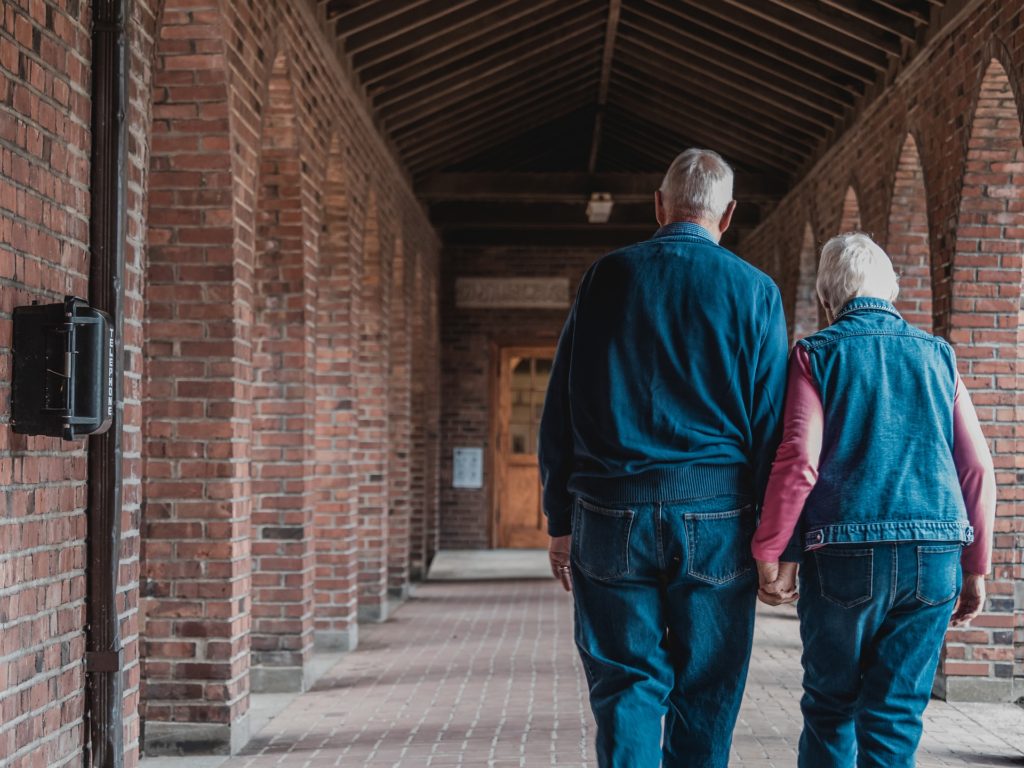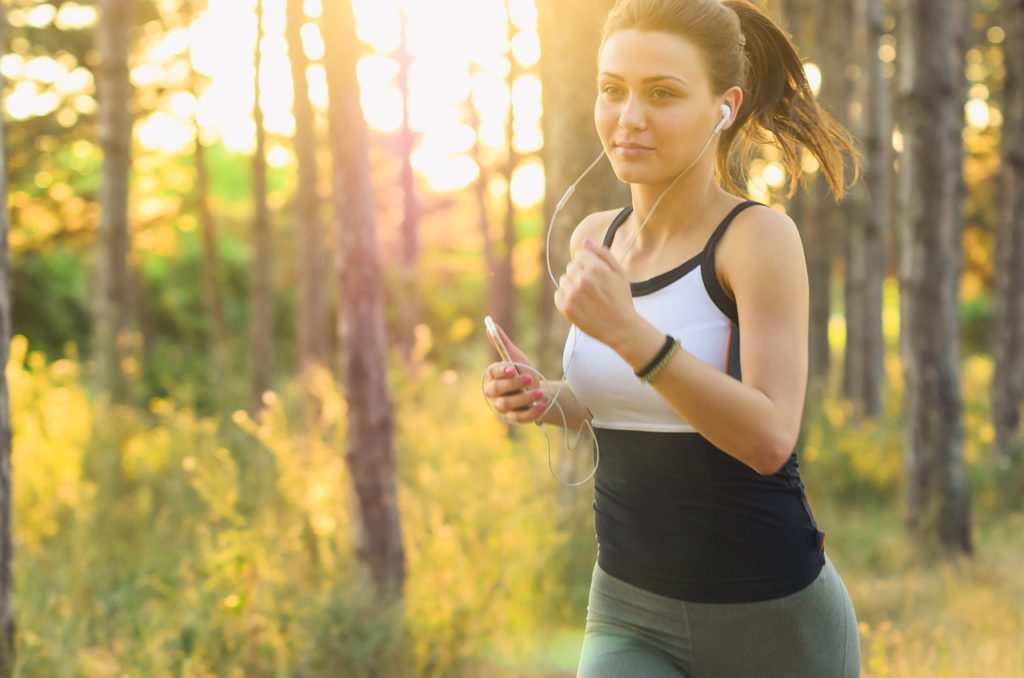
In this video, I share how to exercise effectively, even when you cannot walk.
Adults with obesity practising running CREDIT University Of Granada
The results, obtained by a team of scientists from the University of Granada (UGR), could have multiple practical implications, especially for people at risk of developing insulin resistance or type 2 diabetes.
The UGR’s PROFITH CTS-977 Research Group, in collaboration with the “San Cecilio” and “Virgen de las Nieves” University Hospitals in Granada; the Public University of Navarre; the Centre for Networked Biomedical Research on Physiopathology of Obesity and Nutrition (CIBEROBN); and the Centre for Networked Biomedical Research on Frailty and Healthy Ageing (CIBERFES), has studied the effect of accumulating moderate-to-vigorous physical activity on glucose levels in overweight and obese adults.
Physical activity is known to positively affect glucose regulation, but does it matter what time of day we do it? It was previously unknown whether being more active at a particular time of day (morning, afternoon or evening) could maximise the cardiometabolic benefits of physical activity. “Choosing the ideal time of day seems to be an emerging strategy to enhance the benefits of physical activity on glucose metabolism, especially for those with insulin resistance or at risk of developing type 2 diabetes,” the researchers note.
The study results show that accumulating more moderate-to-vigorous physical activity in the evening, i.e. between 18:00 and 00:00, appears to have a positive effect on glucose regulation in men and women who are overweight or obese. In addition, the benefits of physical activity are greater in people with some form of impaired glucose metabolism, such as elevated glucose levels, glycated haemoglobin and/or fasting insulin resistance index. The results were similar for both men and women.
A total of 186 overweight or obese adults (50% of whom were women) with an average age of 47 years took part in the study. These participants wore an accelerometer and a continuous glucose monitor for 14 days to measure their physical activity and glucose levels 24 hours a day. Days were classified as “inactive” if no physical activity was recorded; as “morning”, “afternoon”, or “evening” if more than 50% of the recorded minutes of physical activity for that day were registered between 6:00-12:00, 12:00-18:00 or 18:00-00:00, respectively; or as “mixed” if none of these defined time periods accounted for more than 50% of the physical activity for that day.
The results could have several practical implications, especially for those at risk of developing insulin resistance or type 2 diabetes, and highlight the importance of considering the time of day when prescribing physical activity. This information may be crucial in improving the effectiveness of exercise interventions in these groups.

About 800 million people worldwide have low back pain, and it is a leading cause of disability and reduced quality of life.
Repeated episodes of low back pain are also very common, with seven in 10 people who recover from an episode going on to have a recurrence within a year.
Current best practices for back pain management and prevention suggest combining exercise and education. However, some forms of exercise are not accessible or affordable to many due to their high cost, complexity, and need for supervision.
A clinical trial by Macquarie University’s Spinal Pain Research Group examined whether walking could be an effective, cost-effective and accessible intervention.
The trial followed 701 adults who had recently recovered from an episode of lower back pain. Participants were randomly allocated to either an individualised walking program and six physiotherapist-guided education sessions over six months or to a control group.
Researchers followed the participants for between one and three years, depending on when they joined, and the results have now been published in the latest edition of The Lancet.
The paper’s senior author, Macquarie University Professor of Physiotherapy Mark Hancock, says the findings could profoundly impact the management of low back pain.
“The intervention group had fewer occurrences of activity limiting pain compared to the control group and a longer average period before they had a recurrence, with a median of 208 days compared to 112 days,” Professor Hancock says.
“Walking is a low-cost, widely accessible and simple exercise that almost anyone can engage in, regardless of geographic location, age or socio-economic status.
“We don’t know exactly why walking is so good for preventing back pain, but it is likely to include the combination of the gentle oscillatory movements, loading and strengthening the spinal structures and muscles, relaxation and stress relief, and release of ‘feel-good’ endorphins.
“And of course, we also know that walking comes with many other health benefits, including cardiovascular health, bone density, healthy weight, and improved mental health.”
Lead author Dr Natasha Pocovi says in addition to providing participants with longer pain-free periods, the program was very cost-effective.
“It not only improved people’s quality of life, but it reduced their need to seek healthcare support and the amount of time taken off work by approximately half,” she says.
“The exercise-based interventions to prevent back pain that have been explored previously are typically group-based and need close clinical supervision and expensive equipment, so they are much less accessible to most patients.
“Our study has shown that this effective and accessible means of exercise has the potential to be successfully implemented at a much larger scale than other forms of exercise.”
To build on these findings, the team hopes to explore how they can integrate the preventive approach into the routine care of patients who experience recurrent low back pain.

Health practitioners and fitness buffs have long known that regular physical activity offers numerous health benefits, including the prevention of chronic conditions such as cardiovascular disease, diabetes, some cancers and osteoporosis.
In addition, exercise enhances immune function and pain control, reduces fall risk and extends life expectancy. Mental health benefits include improved mood, reduced anxiety and decreased risk of dementia and depression.
Despite all these benefits, more than three out of four adults in the United States get far less exercise than the recommended 150 to 300 minutes a week of moderate physical activity or 75 to 150 minutes a week of vigorous physical activity.
Studies have also found that outdoor places such as parks and trails are effective settings for physical activity. The COVID-19 pandemic made this especially clear. Moreover, being in nature provides physical and mental health benefits like physical activity.
Little has been known to date about any potential additive benefits of engaging in physical activity in natural settings. Could being outdoors increase the effects of exercise while also encouraging more people to exercise? And if so, how could health professionals promote this behavior?
To answer these questions and more, Jay Maddock, Regents Professor with the School of Public Health at Texas A&M University and director of the university-led, collaborative Center for Health & Nature, along with Howard Frumkin, Hagler Fellow and senior vice president and director of the Land and People Lab, assessed the current scientific evidence regarding physical activity in natural settings and developed strategies for promoting these activities.
Their study, published in the American Journal of Lifestyle Medicine, identified several factors that affect how often people visit parks and natural settings, the extent to which they engage in physical activities once there and the benefits they get from this activity.
Maddock and Frumkin found that research suggests exercising in a park or other natural setting is more beneficial than exercising indoors. These studies focused on short-term outcomes of less than one year; however, whether these benefits occur over the long term remains to be seen.
“Despite this, the research is clear that natural settings could effectively promote physical activity,” Maddock said. “People generally enjoy being outdoors, with parks, trails and community gardens being the most popular venues.”
Factors that make these venues more attractive to visitors include physical features such as community centers, playgrounds, lighting, clear signage, and natural features such as well-maintained tree canopy and bodies of water. Activities such as classes and festivals also contribute to their popularity, as do a welcoming environment, a perception of safety, and visitors’ strong feeling of connectedness to nature and belief that spending time in these spaces is important.
“Parks and trails are particularly important due to their accessibility and widespread availability, but access varies significantly by geography, and rural areas often have less access to natural spaces because they have more privately held land,” Maddock said. “For example, nearly 98 per cent of Illinois residents live within half a mile of a park, compared to only 29 per cent in Mississippi.”
Maddock and Frumkin also found that the use of parks and green spaces for physical activity varies across demographic groups, with men more likely than women to use these spaces for physical activity. In addition, a study of parks in Los Angeles found that Black adults are less likely than white adults to engage in physical activity in parks, while English-speaking Latinos are equally likely and Asian/Pacific Islanders are more likely.
“Some groups — Black, Indigenous, and other people of colour and immigrant and refugee populations, for example — often have experienced historical or current discrimination that hinders their use of natural spaces, and they routinely have less access to high-quality parks,” Frumkin said. “In addition, children, the elderly and people with disabilities face challenges in accessing natural spaces. Ensuring that these spaces are safe and easy to navigate, with appropriate programming, could help increase their use of parks and other natural settings.”
Considering these complexities, Maddock and Frumkin offer four options healthcare professionals could implement to encourage patients to use parks and other natural settings.
One is simply to “prescribe” nature contact to patients.
“Recommending that patients spend more time in these settings is known as nature prescriptions or ‘ParkRx,’ and while more research is needed, the studies to date suggest that this approach is effective,” Maddock said.
Another is for health professionals to model this behavior by engaging in it themselves. This modelling effectively promotes healthy behaviours while enhancing health professionals’ well-being.
A third approach is for health professionals to engage in community efforts that promote the use of outdoor spaces, such as Houston’s Be Well Communities initiative, which is supported by the M.D. Anderson Cancer Center.
Finally, health professionals could help create and maintain parks and greenspaces by steering funds into these efforts through Community Health Needs Assessments, Medicaid funds and funds from health care conversion foundations.
“It is clear that the use of parks and natural settings for physical activities could be a potentially powerful tool for promoting two important health behaviors simultaneously,” Maddock said. “This could be especially important given that the majority of Americans do not get enough exercise or spend enough time outdoors.”